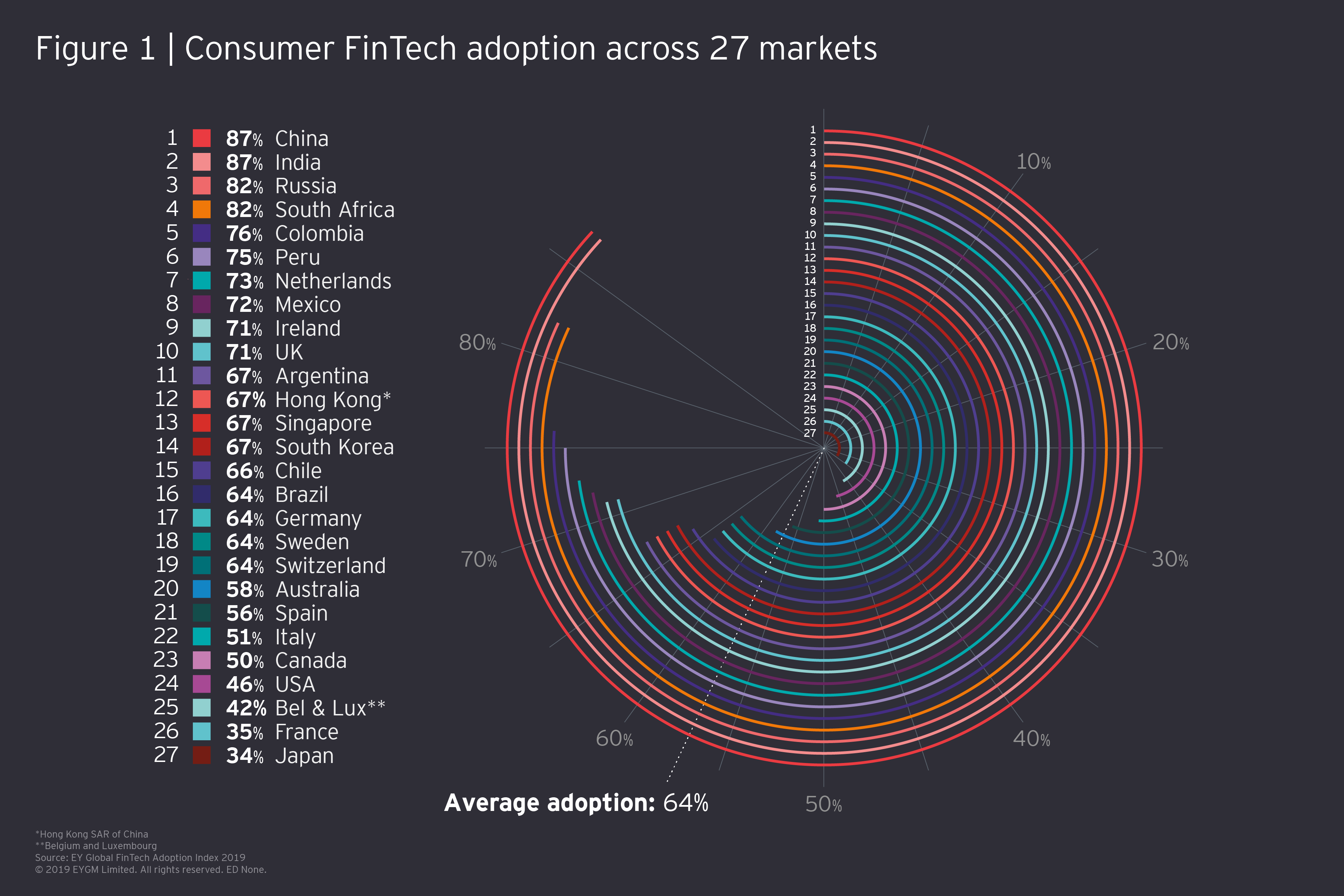Regulatory changes and digitization accelerate the rise of digital ecosystems
EY experienced that an essential factor for effective collaboration is the need for coexistence and codependency. Both parties need to have clear collaboration incentives and the right sponsorship and stakeholder commitment to support the collaboration. Alignment between the incentives and strategic objectives of both parties is key to design effective partnerships around genuinely complementary capabilities. This form of collaborating mostly occurs through corporate venturing, leveraging capabilities from both parties and aligning incentives.
The success of a collaboration also depends on the flexibility and agility in business and IT as well as internal process maturity to adopt and implement new technologies. Stakeholders from these different domains should be involved from the start.
From the bank’s perspective, establishing a central innovation team that drives the activation, with linkage into different business units, ensures that the FinTech becomes integrated in the right place with the right support.
Case study from Rabobank
Rabobank digitized its customer onboarding journey via a partnership with Signicat, a Norwegian FinTech
Back in 2017 the market for Digital Identity Service Providers was opening up after iDIN, the identification counterpart to iDeal, started to gain traction. To that extent and to provide a wider array of services, Rabobank partnered with Norwegian FinTech Signicat, a company that focused on providing digital identity services and solutions. At the heart of the collaboration was the creation of a more customer-friendly digitized experience for clients. Through what is now called Rabo Identity Services, the partnership helps businesses to easily onboard their customers digitally, offering a range of digital identity services and log-in options.
Signicat offers a myriad of identity solutions, such as digital identifying and digital signing, compared to on top of iDIN. This, to this day still unique, offering proves to be extremely beneficial for both parties, combining the technological savviness of the FinTech with the well-regulated network of the bank.
The partnership takes the best of both worlds, offering Signicat’s technical capabilities to a wider audience and providing the relatively small FinTech with a large amount of credibility. Even though the FinTech market has become an establishment in itself, large corporate clients still remain hesitant to enter into partnerships with small names. In this instance, next to providing Signicat with market knowledge and a platform to grow from, Rabobank provides an established, reliable brand, thereby making an indirect partnership between large corporates and FinTech companies like Signicat possible. This trend will continue, underlining the need for well-functioning collaborations between banks and FinTech companies.
The emergence of platform-based business models will accelerate collaboration
Looking ahead, EY and Rabobank foresee that digital ecosystems will encourage industry convergence between FinTech challengers, incumbents and non-financial services companies, who are expanding their customer offerings into financial services. Together they need to create webs of collaborative relationships, against a context of continued change and innovation, replacing the traditional bilateral partnerships.
Collaboration between banks and FinTechs will thrive with the rise of digital ecosystems and platform-based business models. Banks need to be highly engaged in developing a strategy and business model to collaborate with FinTech companies, via participation in or the creation of digital ecosystems. We expect this will become the dominant model for the delivery of financial services, as it will drive a more customer centric go-to-market strategy. The use of Application Programming Interfaces (APIs) enables the sharing and co-creation of solutions between banks and FinTech companies. This ‘plug and play’ platform collaboration enables banks and FinTechs to explore the collaboration without making large financial commitments, while providing a seamless experience for the customer. To ensure a future proof business model it is paramount that the listed factors for effective collaboration, like the right sponsorship and incentives, are addressed by both parties. Moreover, getting to know the company, people and product behind the brand is key for a successful and sustainable collaboration.
I’d like to thank Simon Olive, Senior Relationship Banker – FinTech Sector Coverage Rabobank Financial Institutions Group, Jeroen van Linschoten, Director – Transaction Banking Rabobank Wholesale Clients Netherlands en Folkert de Jong, Associate at Rabobank Financial Institutions Group as well as Lysanne Jurjens, Senior Manager Business Transformation, EY NL FinTech Lead and and Nikki Paes, Senior Consultant Business Transformation for their valuable contribution to this article.
Summary
Collaboration between banks and FinTechs is evolving, driven by the rise of digital ecosystems, regulatory changes and increasing customer adoption. A collaboration with a bank provides FinTech companies with a stable client base, stamp of trust, access to capital and know-how. Banks profit by ensuring a seamless digital customer experience and the integration of new technology. Collaborations come in multiple forms with varying financial commitments. Banks are increasingly investing in innovative “plug and play” collaboration models. These models enable banks and FinTech companies to explore the collaboration, in terms of culture, business processes and IT, without making large financial commitments while providing a seamless experience for the customer.




